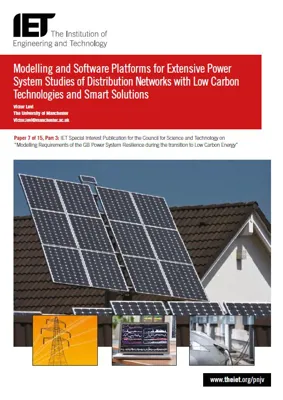Modelling and Software Platforms for Distribution Networks with Low Carbon Technologies
The paper presents software, input data and modelling aspects of the recently initiated project ‘Study into the 2030 Distribution System’. The main objectives are evaluation of input data and modelling requirements and capabilities for studying future distribution networks, identification of gaps in existing modelling capabilities and currently available input data, critical assessment of the role of distribution network owners and impact on the GB power system performance and security.
Modelling of future distribution networks requires integration of low carbon technologies, such as solar and wind generation, electric vehicle and heat pump demands, energy storage, etc., as well as ‘smart’ network solutions including demand side management and response, new voltage control concepts, power electronics controllers, dynamic network reconfigurations, network meshing, etc.
A number of power system studies, namely load flow, optimum power flow, fault/short-circuit, frequency response and system balancing, reliability, dynamics, power quality and protection analyses will need to be applied by future distribution companies in order to assess technical feasibility of the envisaged network solutions.
Several input data and modelling gaps are identified in this paper. Sequential load flow studies with annual load and demand profiles will need to be applied. It is highly desirable to have (single-stage) optimum power flow model with appropriate objective functions and/or security constraints, multi-stage load flow and/or optimum power flow models, network reconfiguration and restoration functions, much improved reliability engine, all with the models of new low carbon technologies and some of ‘smart’ solutions.
Existing graphical information systems should be amended with basic power system analysis tools in order to study low voltage networks within planning stages. Fault analysis should be done in accordance with the UK engineering recommendations, taking into account fault contributions and models of low carbon technologies. Frequency response, angle and voltage stability studies will require dynamic models of existing and new controllers, as well as of new low carbon technologies and some of ‘smart’ solutions.
Study of very fast electromagnetic transients should be performed on networks with power converters. Assessment of network reliability should be done using the sequential Monte Carlo approach instead of currently available enumeration and explicit methods. To find total harmonic distortions, measurements of background harmonic injections and harmonic injections of new devices are required. New protection schemes, which can cope with bi-directional flows, distribution network meshing, new protection grading, etc., need to be developed.

